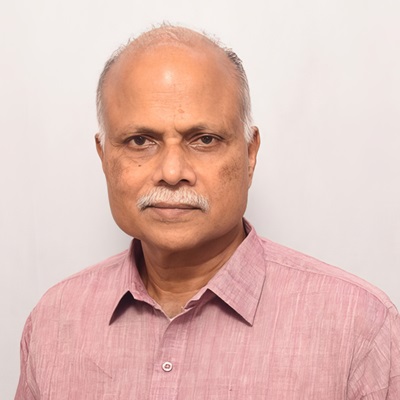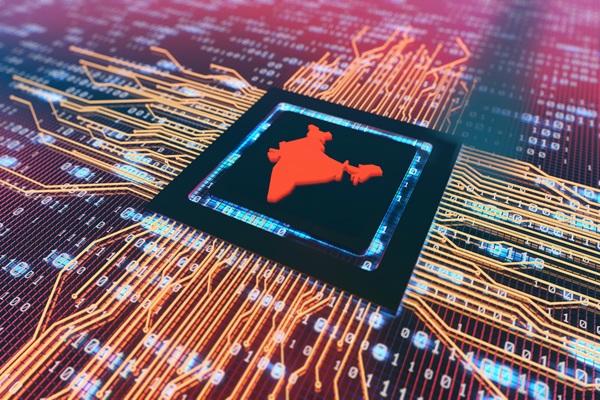.png)

T.K. Arun, ex-Economic Times editor, is a columnist known for incisive analysis of economic and policy matters.
September 24, 2025 at 6:46 AM IST
Indian engineers have designed a three-nanometre chip. Another team of Indian engineers is hard at work developing a two-nanometre chip, right at the frontier of chip technology. So, India is taking great strides in the area of semiconductor design and manufacture, right? Wrong.
Yes, Indian engineering teams located in Bengaluru and Noida worked together to design the three-nonometre chip, which has been taped out, meaning handed over to a foundry in a form that is ready for the foundry to convert into an actual chip. But the engineers worked for a Japanese embedded semiconductor solutions provider called Renesas, which has annual revenues in the region of $10 billion and operates in 30 countries.
The 2 nm project is run by ARM, the Softbank-controlled Britain-based chip design firm. The engineers at work are Indians, working in India. But the intellectual property they develop would be owned by ARM, a foreign company.
Why don’t Indian companies show the chutzpah to take on chip design at the cutting edge? Why are they happy to let foreign transnational corporations make use of Indian talent and develop intellectual property that these foreign entities would own, and probably, later on, licence to some Indian company adventurous enough to deploy frontier technologies?
But, in the first place, does it really matter, if foreign companies own the IP to advanced chips, rather than Indian companies? These chips will be available to us, won’t they? Why insist on ownership of the technology?
The US policy on export of advanced semiconductor to China brings out the importance of having control of high-end technology. The US has restricted the sale of the most powerful chips that NVIDIA makes to China, because Americans believe that would hinder China catching up with and overtaking the lead US Big Tech has in artificial intelligence, which, in turn has huge implications for commercial and strategic competitiveness. In response, Chinese companies have developed most parts of the chip manufacturing ecosystem on their own, and now produce advanced semiconductor in China, whose sale cannot be controlled by any foreign government.
ARM and Samsung are working on 2 nm chips. Intel is trying to build even tinier circuits, 18 angstroms in thickness, or 1.8 nm. These will call for changing transistor design as well, but end up with ever more powerful and compact chips.
Suppose a foreign tech major develops cutting edge chips in India, and even fabricates them in India. Will India have untrammelled access to these chips? Far from it. The US administration has forbidden not just the sale of the most advanced chips to China, but of the specialised equipment to manufacture chips. A Dutch company, ASML used to be the sole supplier of machinery capable making use of extreme ultraviolet light to etch nanometre sized grooves on silicon wafers. Vaporised copper is then deposited in these grooves to create the ultra-thin circuits that power advanced chips.
ASML is a Dutch company. But some of the technology its equipment embodies was developed in the US. So, when the US administration imposed a ban of sensitive American technology to China, ASML stopped selling its kit to Chinese buyers. To defy the US government would be impossible for any advanced tech manufacturer in the Western sphere of influence. Sanctions and secondary sanctions could be imposed on the company, and it would cease to be viable, the company, its financiers and customers all being cut off from dollar networks and financing.
No company has come forward to set up advanced chipmaking plants in India. The projects have, for the most part, been assembly, packaging, marking and testing of chips from external foundries. Even if TSMC were to set up a foundry in India, and the US government told it to stop supplies of chips to Indian entities, it would oblige. Not complying would not be an option.
Imagine a scenario in which India needs some advanced chips for its missiles and avionics, but foreign companies operating in India are barred from selling them to India, but these companies are free to sell the chips in question to Pakistan, which also needs them for its ordnance. This would have been tough to imagine before Trump and the likes of Ron Varo, a name Trump’s India-bashing trade counsellor Navarro invented for himself, rearranging the letters of his own name to form an anagram. Not anymore.
For India to have reliable, uninterrupted access to silicon that is guaranteed not to be amenable by design to foreign eavesdropping or hijacking, it must develop its own. The success of Indian engineers at Renesas shows that Indian talent can do advanced research. Talent is not a constraint.
Indians are, in general, very proud of the fact that over 1,700 global capability centres operate in India. These GCCs carry out, unlike captive units of multinational companies in India of an earlier vintage, not just back office work, but advanced research that produces new IP.
What is it that foreign companies running GCCs in India do that Indian companies cannot? Can’t Indian companies pay their research teams the kinds of salaries that MNCs pay their Indian staff?
If MNCs simply wanted Indian talent, they could hire them and relocate them to their home bases, and get them to work supported by the superior infrastructure available there. Yet, MNCs set up GCCs in India, because they want to benefit from the lower cost of operations to be had in India, chiefly on account of lower remuneration for key personnel.
Indian employers can certainly match these salaries. That is not the problem. The problem is that R&D carries high risk. You pay good salaries to lots of capable people, spend on equipment and material, and yet, you could end up stumped, rather than trumps. The investment in the R&D would have to be written off, and fresh money injected to carry out yet more research. The fruit of success, owned intellectual property, would be sweet indeed, but Indian entrepreneurs are too scared of the bitterness of failure.
As per the latest figure available, India spent 0.64% of GDP on R&D in 2023, and 63% of that small amount came from the government. Only pharma companies habitually spend on R&D. Most regular Indian companies spend next to nothing on R&D, and pat themselves on the back for the fat profits they still make, thanks to relatively high levels of protection they have been accorded. The good thing is that a bunch of startups have started doing R&D, to make bits and parts of defence and telecom equipment, with some backing from a handful of large companies and the government.
This trend needs to be accelerated. India must increase its R&D outlay to at least 3% of GDP. The supply of venture capital must increase, allocating a share of our retirement savings for R&D-focused startups, with the permission of the savers. The investing public lavishes its savings on all sorts of shady IPOs with abandon. Why would Indians not be willing to fund venture capital for Indian startups?
Foreign, rather than Indian, companies develop technology in India using Indian talent because of the Indian business class’s timidity to assume risk, and the government’s readiness to offer it protection from external competition, so that it can generate fat profits even without developing intellectual property of its own. The supply of risk capital for startups is global, true, but the potential to increase local availability of such capital has not been tapped. If entrepreneurship and policy can rid themselves of timidity, Indians would develop technology to own and deploy, for their own benefit and the world’s.




